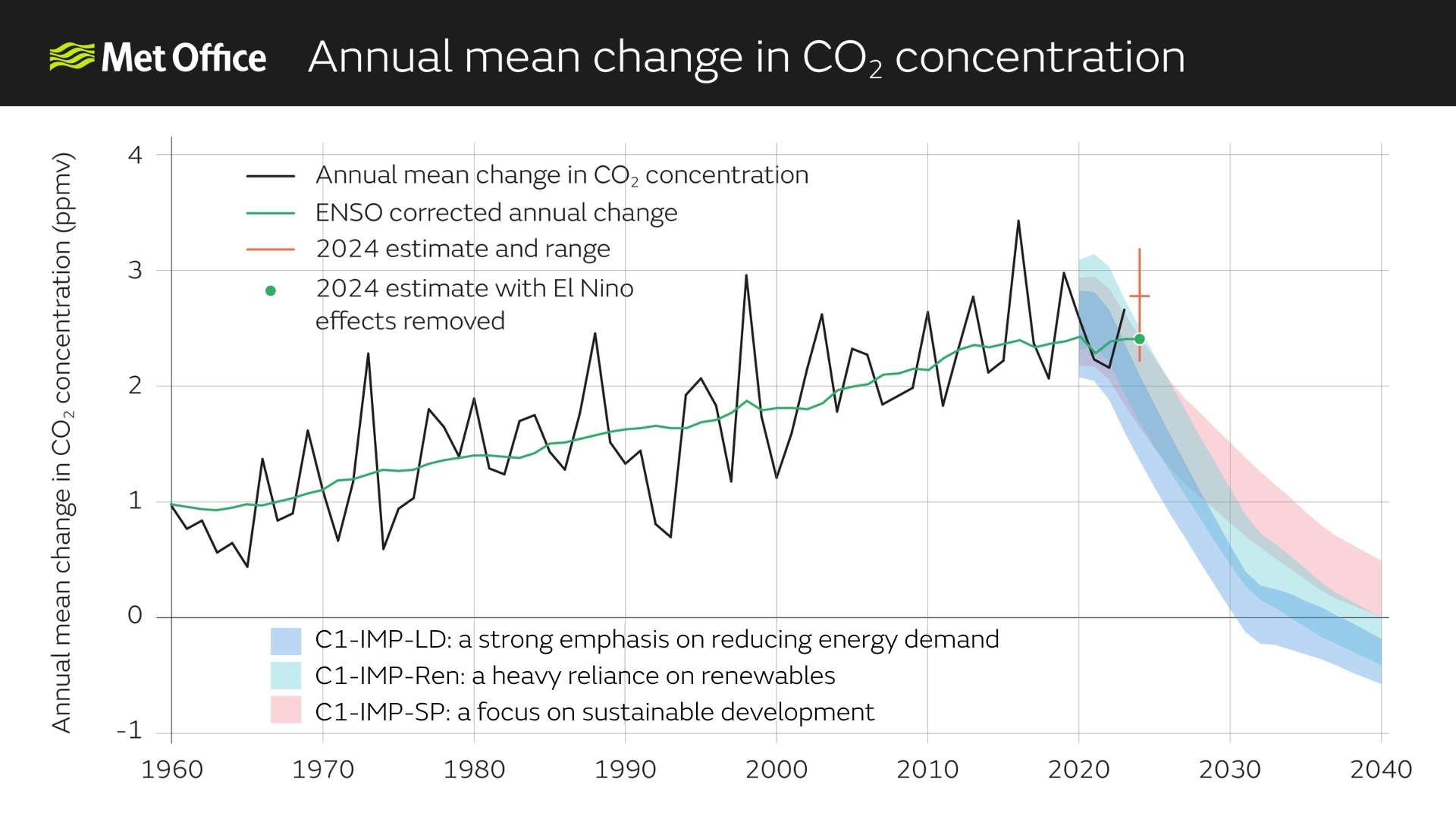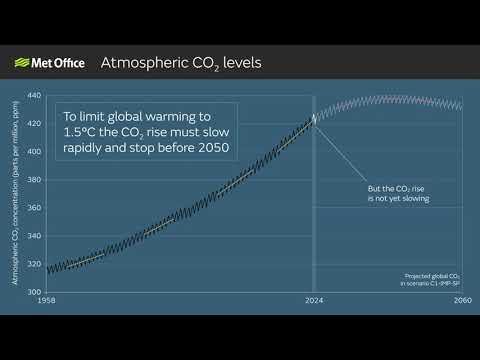The annual Met Office CO₂ forecast estimates the annual rise in the atmospheric concentration of carbon-dioxide, measured at Mauna Loa in Hawaii.
The ongoing CO₂ rise is mainly driven by fossil fuel burning and land use change. However, there is currently an additional impact as El Niño causes a temporary weakening of tropical land carbon sinks – areas which would normally absorb some of the carbon released will have reduced capacity because of the effects of El Niño.
Professor Richard Betts is the Met Office author of the CO₂ forecast. He said: “This year’s estimated rise in atmospheric carbon-dioxide concentration is well above all three 1.5°C-compatible scenarios highlighted in the IPCC report. Even when we compensate for the temporary effects of El Niño, we find that human-induced emissions would still cause the CO₂ rise in 2024 to be on the absolute limits of compliance with the 1.5°C pathways.”
The Met Office forecasts the annual average CO₂ concentration at Mauna Loa, Hawaii will be 2.84 ± 0.54 parts per million (ppm) higher in 2024 than in 2023. As a result, the forecast suggests the 2024 annual average CO₂ concentration at Mauna Loa to be 423.6 ± 0.5 ppm.
Richard Betts added: “The atmospheric CO₂ rise has accelerated over the last six decades. If global warming is to stay below 1.5°C, the rate of build-up of CO₂ in the atmosphere would need to slow substantially in the coming years, and halt altogether before mid-century. The forecast for 2024 does not show such a slowing.”

Looking at year-by-year changes, this year’s projected faster rise in CO₂ concentration (red line) is well above the annual change needed to track three key illustrative 1.5°C-compatible scenarios in the graph above.
The faster rise in 2024 is associated with weakened carbon sinks due to El Niño conditions, which dry out tropical forests affecting their ability to absorb carbon-dioxide, so is expected to be temporary. Nevertheless, when this effect is excluded (as shown the dark green line and green spot in the above graph), human-induced emissions would still cause the CO₂ rise in 2024 to be well above the rate required to track the “low-energy demand” 1.5°C scenario, and at the upper end of the uncertainty range for the other two 1.5°C scenarios.
The current level of global warming is approximately 1.3°C, driven by the human-caused build-up of greenhouse gases in the atmosphere. The Paris Agreement aim of limiting warming to 1.5°C refers to the average over a long period such as 20 years. Although the global temperature in 2023 was nearly 1.5°C above pre-industrial, making it the hottest year on record, the natural cycle of El Niño had temporarily added to the human-induced warming. The record temperatures in 2023 therefore do not represent an exceedance of 1.5°C human-caused global warming.





